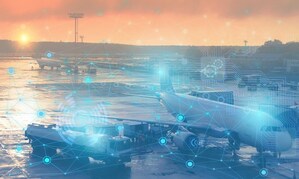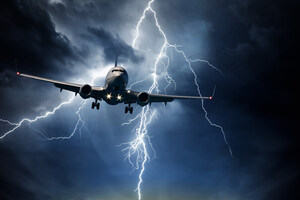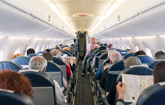Artemis Aerospace: top five events that changed the aviation industry forever
WISTON, England, Sept. 15, 2022 /PRNewswire/ -- The long and illustrious history of the aviation industry has been fraught with many trials and tribulations over the years that have tested businesses to their limits and served as a catalyst for change. Here, component supply specialist Artemis Aerospace looks at the events that had a significant impact on the sector and how they have changed aviation forever.
The world's most significant air crash
Fortunately, air crashes are extremely rare and travelling by aircraft continues to be the world's safest form of travel. In fact, according to the NTSB, the chances of being on a commercial airline flight that is involved in a fatal accident is around 1 in 20 million, while the chances of dying are a tiny 1 in 3.37 billion.
The emphasis on safety in the aviation industry is paramount - pilots, engineers and air traffic controllers are all highly skilled and dedicated to ensuring passengers remain safe.
However, in the early days of aviation, when flying was still very much in its infancy, crashes were far more common. In 1908, the first aeroplane passenger death was recorded when Lt. Thomas Selfridge died after a Wright Flyer, piloted by Orville Wright, crashed during a trial flight in Virginia, USA. It wasn't until 1919 when the first commercial aircraft, a Caproni Ca.48, crashed in Verona killing everyone on board.
In 1977, the world's deadliest air crash left a lasting legacy on international airline regulations and requirements.
The Tenerife airport disaster occurred when two Boeing 747 passenger jets collided on the runway at Los Rodeos Airport killing 583 people. Investigations revealed that the captain of one of the aircraft, operated by KLM, mistakenly attempted to take off while a Pan Am flight was still taxiing on the runway.
The disaster highlighted the vital importance of using standardised terminology for all radio communications rather than colloquialisms, such as 'OK', including a readback of the key parts of the instruction to confirm a mutual understanding.
The introduction of budget airlines and package holidays
Budget air travel has transformed the aviation industry and has resulted in many more people than ever before being able to enjoy the experience of travelling overseas to far flung destinations.
The world's first low-cost carrier was Southwest Airlines, which was set up in 1967 by Herb Kelleher and Rollin King. In 1971, the Texas-based company began operating as an intrastate airline before starting a regional interstate service in 1979. The business model used by Southwest set the foundations for other no-frills carriers, including EasyJet and Ryanair.
Southwest's philosophy was based on four principles that underpin the budget airline business model. These include only flying one type of aircraft, aiming to cut operating costs year-on-year, turning around aircraft as quickly as possible and keeping things simple by only selling seats on planes, instead of creating loyalty schemes and similar add-ons.
Volcanic eruptions and British Airways Flight 009
The 2010 Eyjafjallajökull eruption might be one of the most recent incidences of volcanic ash causing aircraft to be grounded, but perhaps the most notorious is the 1982 cloud of volcanic ash from Mount Galunggung in Jakarta. British Airways Flight 009 was forced to perform an emergency landing after flying through the volcanic cloud, which caused all four of its engines to cut out.
As a result, meteorologists leave nothing to chance and the 2010 Eyjafjallajökull eruption, which was identified as an explosive gas-driven eruption and therefore highly dangerous, was deemed a significant hazard for aircraft. As a result, all flights to and from Europe and flights within the continent were cancelled for seven days – the largest disruption to air travel since World War II. The IATA estimated the industry lost $200 million for every day the airspace in Europe was closed.
9/11
The September 11 terrorist attacks on the US had a profound impact on the commercial airline industry, which has long prided itself on the safety and security of passengers.
After nineteen terrorists hijacked four commercial airliners in the US, the attackers – who included flight-trained individuals to take over and control the aircraft – crashed the planes into prominent American landmarks, including the World Trade Center in New York City and the American military's headquarters, the Pentagon in Virginia.
The attacks claimed the lives of 2,977 people and remain the world's deadliest in history.
As a result, aircraft security globally was tightened significantly for airport screening and cockpit safety.
In the US, it had been possible before the attacks for anyone without a ticket to accompany family and friends through security to the departure gate. This was immediately changed and only passengers with tickets can now go through security into departures.
Some airlines had allowed passengers to carry small knives on board. In the case of 9/11, three of the hijackers set off the metal detectors during security screening. Despite being scanned with a hand-held detector, they were allowed through. Footage later showed that they had what appeared to be box cutters clipped to their back pockets – something that was allowed on certain aircraft at the time. Since then, many airports have installed full-body scanning machines to detect hidden weapons and explosives with millimetre precision.
Identification checks have also been overhauled and passengers travelling on domestic flights now require a valid form of photo ID in order to travel.
COVID-19 pandemic
The recent COVID-19 pandemic undoubtedly had a significant impact on the aviation industry. For the first time in history, aircraft across the globe were permanently grounded for an indeterminate length of time. Huge losses ensued for the commercial airline sector and hundreds of staff were made redundant or furloughed.
While air travel is gradually returning to pre-2019 levels, the consequences for the commercial aviation industry have been felt far and wide with many challenges now being faced.
However, not all the changes have been detrimental and the industry, adaptable as ever, has fully embraced new technology and features to make the passenger journey more streamlined, safe and enjoyable. These include using facial recognition at security and customs and utilising apps, not just for ticketing but a whole host of other experiences including airport shopping and in-flight entertainment.
Website: www.artemisaerospace.com
Sources
https://flyfright.com/statistics/
https://en.wikipedia.org/wiki/Tenerife_airport_disaster
https://en.wikipedia.org/wiki/Airport_security_repercussions_due_to_the_September_11_attacks
https://en.wikipedia.org/wiki/British_Airways_Flight_009
https://simpleflying.com/eyjafjallajokull-eruption-on-aviation/
https://en.wikipedia.org/wiki/2010_eruptions_of_Eyjafjallaj%C3%B6kull
https://www.nationalgeographic.com/travel/article/the-future-of-flying-is-going-high-tech-due-to-coronavirus-cvd
Photo - https://mma.prnewswire.com/media/1899850/Artemis_Aerospace.jpg
SOURCE Artemis Aerospace

WANT YOUR COMPANY'S NEWS FEATURED ON PRNEWSWIRE.COM?
Newsrooms &
Influencers
Digital Media
Outlets
Journalists
Opted In






Share this article